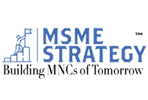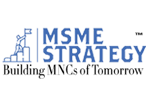Top 5 AI Tools SMEs Use for Profitability Analysis
In an era where financial clarity and agility separate winners from laggards, SMEs are increasingly turning to AI-powered tools to augment their profitability analysis. The right AI application can transform scattered data into strategic insight—reducing guesswork, compressing cycle times, and sharpening margin focus.
Below are five AI-enabled platforms (or categories of tools) that SME leaders should be aware of when upgrading their financial stack.
- Botkeeper – Automated Bookkeeping + Insight Engine
Botkeeper combines machine learning and human oversight to automate bookkeeping workflows (transaction matching, categorization, etc.). (karbonhq.com)
Why SMEs use it:
- Eliminates manual entry and associated human error
- Frees up internal teams to focus on higher-value analytics
- Produces clean, ready-to-use financial statements faster
- Fathom – KPI & Comparative Dashboard Intelligence
Fathom is not a full bookkeeping tool but a financial intelligence dashboard that layers analytics over accounting data. It helps SMEs benchmark performance, analyze trends, and monitor unit economics. (Elite Business Magazine)
What it adds:
- Custom KPI tracking (e.g. margin by product, R&D ratio)
- Scenario modelling and “what-if” overlays
- Peer benchmarking against defined cohorts
- MarginMax AI – SKU / Product-Level Profitability Lens
MarginMax AI is designed to uncover underperforming SKUs or service lines and flag pricing or cost misalignments. (Deliberate Directions)
Strategic value:
- Fine-grained insight into product margins
- Alerts when input cost changes erode profitability
- Supports pruning or pricing adjustments
- Docyt AI – Continuous Reconciliation + Multi-Entity Rollup
Docyt automates transaction matching, categorization, and reconciliation, with strength in handling multiple legal entities and consolidated reporting. (Docyt)
Use case for SMEs:
- Reduces delays from multi-entity complexities
- Ensures consistency across subsidiaries or divisions
- Serves as a backbone for consolidated profitability views
- Trullion – Automated Accounting & Compliance Assistant
Trullion is more advanced toward mid-market / complex accounting use cases, automating tasks like lease accounting, revenue recognition, and audit workflows. (Trullion)
Why consider it early:
- Mitigates complexity as your SME scales
- Reduces risk in compliance-heavy financial environments
- Offers AI-driven explanations and audit trails
Why These Tools Move the Needle
- Speed to insight: Monthly close cycles compress from weeks down to days when reconciliation and reporting are largely automated.
- Error and leak reduction: Automated categorization and anomaly detection reduce manual misallocations and “escape errors.”
- Scalability built in: As transaction volume grows, overhead doesn’t scale linearly.
- Sharper strategic focus: Instead of wrestling with data, finance can lead scenario planning, margin plays, and resource prioritization.
Action Steps for SME Leaders
- Audit your current stack: Map where manual handovers, reconciliations, or delays occur in your P&L workflow.
- Pilot one AI tool: Start with a domain where ROI is measurable (e.g. invoice processing or SKU margin analysis).
- Integrate upstream & downstream systems: Ensure AI tools ingest ERP, CRM, inventory, or sales data for holistic insight.
- Define KPIs pre- and post-implementation: Time-to-close, correction volumes, margin uplift—track impact consistently.
- Scale in tiers: As confidence builds, layer additional AI modules (forecasting, customer profitability, scenario simulations).
Investing in AI for profitability isn’t a luxury—it’s a necessity for SMEs aiming to stay ahead in profit resilience and agility.
MSME Strategy Consultants (global.msmestrategy.com) stand ready to assist you in vetting, piloting, and scaling AI financial tools across your SME.
#GlobalMSMEStrategy #AIforSMEs #ProfitabilityTools #SmartFinance #DigitalTransformation #FinancialIntelligence #SMELeadership






